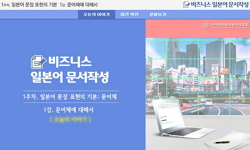이 글은 지금까지 10여 차례에 걸쳐 계양산성에서 조사된 수많은 성격의 유구와 유물 중에서 문자자료에 주목하여 논지를 진행하였다. 특히 계양산성에서는 목간을 비롯하여 수많은 기와에...
http://chineseinput.net/에서 pinyin(병음)방식으로 중국어를 변환할 수 있습니다.
변환된 중국어를 복사하여 사용하시면 됩니다.
- 中文 을 입력하시려면 zhongwen을 입력하시고 space를누르시면됩니다.
- 北京 을 입력하시려면 beijing을 입력하시고 space를 누르시면 됩니다.
https://www.riss.kr/link?id=A107214067
- 저자
- 발행기관
- 학술지명
- 권호사항
-
발행연도
2020
-
작성언어
Korean
-
주제어
계양산성 ; 문자자료 ; 글자기와 ; 음각 부호 ; 주부토 ; Gyeyangsanseong Fortress ; textual materials ; letters ; inscriptions ; phonetic symbols ; Jubuto
-
등재정보
KCI등재
-
자료형태
학술저널
-
수록면
107-137(31쪽)
- 제공처
-
0
상세조회 -
0
다운로드
부가정보
국문 초록 (Abstract)
결과적으로, 계양산성 글자기와는 크게 음각 부호 글자기와와 ‘주부토(主夫吐)’ 관련 글자기와, 그리고 ‘구암앙일시(견)성(九嵒仰一是(or 見)成)’ 관련 글자기와이다. 총 세 단계 구분이 가능하다. 일반 평기와는 전반적인 고고학적 속성과 계통성 안에서 크게 6세기 중후반에 제작되기 시작하여 10세기 전반까지 시기별로 변화양상을 나타낸다. 여기서 음각 부호 글자기와는, 몇 점의 앞선 시기도 있지만, 줄무늬나 격자무늬를 중심 무늬로 하며 단판의 두드림판으로 부분 또는 전면두드림하였다. 또한 측면의 자르기 흔적은 대부분 한번에 기와칼로 그어 분리하거나 2~3회 조정한 것들이다. 이러한 글자기와들의 고고학적 속성을 토대로 음각 부호 글자기와들은 7세기 중반에서 8세기 전반을 중심시기로 편년하였다. 음각 부호의 성격에 대하여는 조심스럽게 압자(押字)의 형태가 아닐까 추정해보았다.
다른 부류는 ‘주부토(主夫吐)’ 관련 글자기와들이다. 고고학적 속성은 장판화된 줄무늬나 솔잎무늬, 격자무늬가 복합된 형태 등으로 두드림판은 중판 또는 장판화되고 측면 자르기는 내에서 외로 향하거나 교차 자르기하는 형태를 나타내고 있어 8세기 후반에서 9세기 후반까지로 편년이 가능하다. 이러한 글자기와는 통일신라 후반 지방호족의 등장과 함께 옛 삼국의 지명을 재사용하는, 즉 지방마다 고구려와 백제를 계승한다는 차원에서 이루어진 지명의 복고현상으로 파악하였다.
마지막 부류는 ‘구암앙일시(견)성(九嵒仰一是(or 見)成)’ 관련 글자기와이다. 고려시대 전기에 해당하는 기와들로 사찰과 관련된 것들로 판단된다.
이 글은 지금까지 10여 차례에 걸쳐 계양산성에서 조사된 수많은 성격의 유구와 유물 중에서 문자자료에 주목하여 논지를 진행하였다. 특히 계양산성에서는 목간을 비롯하여 수많은 기와에서 글자가 확인되어 문자자료의 가치가 상당히 높기 때문이다. 글은 지금까지의 계양산성 발굴결과를 토대로 문자자료를 정리하고 특히 글자기와의 고고학적 속성과 연관시켜 그 특성 및 구체적인 편년안을 제시하였다.
결과적으로, 계양산성 글자기와는 크게 음각 부호 글자기와와 ‘주부토(主夫吐)’ 관련 글자기와, 그리고 ‘구암앙일시(견)성(九嵒仰一是(or 見)成)’ 관련 글자기와이다. 총 세 단계 구분이 가능하다. 일반 평기와는 전반적인 고고학적 속성과 계통성 안에서 크게 6세기 중후반에 제작되기 시작하여 10세기 전반까지 시기별로 변화양상을 나타낸다. 여기서 음각 부호 글자기와는, 몇 점의 앞선 시기도 있지만, 줄무늬나 격자무늬를 중심 무늬로 하며 단판의 두드림판으로 부분 또는 전면두드림하였다. 또한 측면의 자르기 흔적은 대부분 한번에 기와칼로 그어 분리하거나 2~3회 조정한 것들이다. 이러한 글자기와들의 고고학적 속성을 토대로 음각 부호 글자기와들은 7세기 중반에서 8세기 전반을 중심시기로 편년하였다. 음각 부호의 성격에 대하여는 조심스럽게 압자(押字)의 형태가 아닐까 추정해보았다.
다른 부류는 ‘주부토(主夫吐)’ 관련 글자기와들이다. 고고학적 속성은 장판화된 줄무늬나 솔잎무늬, 격자무늬가 복합된 형태 등으로 두드림판은 중판 또는 장판화되고 측면 자르기는 내에서 외로 향하거나 교차 자르기하는 형태를 나타내고 있어 8세기 후반에서 9세기 후반까지로 편년이 가능하다. 이러한 글자기와는 통일신라 후반 지방호족의 등장과 함께 옛 삼국의 지명을 재사용하는, 즉 지방마다 고구려와 백제를 계승한다는 차원에서 이루어진 지명의 복고현상으로 파악하였다.
마지막 부류는 ‘구암앙일시(견)성(九嵒仰一是(or 見)成)’ 관련 글자기와이다. 고려시대 전기에 해당하는 기와들로 사찰과 관련된 것들로 판단된다.
다국어 초록 (Multilingual Abstract)
Based on the results of the excavation of Gyeyangsanseong Fortress so far, the text materials were compiled and related to the archaeological properties of the letter-rooftiles, suggesting its characteristics and specific chronology for the specil.
As a result, the letter-rooftiles of Gyeyangsanseong Fortress are largely divided into sign symbols and ‘jubuto’ related letters. And it is the writing related to “Guamangilshi(or gyeon)seong.” A total of three levels can be distinguished. The general average period began to be produced in the mid- to late 6th century in a large scale within the overall archaeological properties and systematicality, and changed period by period until the first half of the 10th century. Here, the inscriptions and inscriptions include several preceding periods, but they are partially or front-end patched with a single-plate tapping plate with stripes or plaid patterns. In addition, most of the segmentation marks on the sides are either drawn with a tile knife at a time or made two or three adjustments. Based on the archaeological properties of these characters, the types were first dated from the mid-7th century to the early 8th century. As for the nature of the types, we carefully assumed that they might be in the form of a signs.
The other types are “jubuto” related letters. Archaeological properties include a combination of long plate stripes, pine needles, and lattice patterns, and the knurled board represents a form of middle or long plate and side division facing or cross-splitting within, enabling it to be spread from the late 8th to the late 9th century. These writings were identified as the retrograde phenomenon of geographical names, which was achieved by reusing the names of the three ancient kingdoms, namely the succession of Goguryeo and Baekje in each province, with the emergence of local residents in the latter half of the Unified Silla Period.
The last category is the writing related to “Guamangilshi(or gyeon)seong.” These tiles, which correspond to the early Goryeo Dynasty, are believed to be related to the temple.
Among the numerous ruins and relics of that have been investigated in Gyeyangsanseong Fortress over 10 times so far, this article focused on textual materials. Especially in Gyeyangsanseong Fortress, letters have been identified in numerous tiles, inc...
Among the numerous ruins and relics of that have been investigated in Gyeyangsanseong Fortress over 10 times so far, this article focused on textual materials. Especially in Gyeyangsanseong Fortress, letters have been identified in numerous tiles, including wooden tablets, and the value of text materials is quite high.
Based on the results of the excavation of Gyeyangsanseong Fortress so far, the text materials were compiled and related to the archaeological properties of the letter-rooftiles, suggesting its characteristics and specific chronology for the specil.
As a result, the letter-rooftiles of Gyeyangsanseong Fortress are largely divided into sign symbols and ‘jubuto’ related letters. And it is the writing related to “Guamangilshi(or gyeon)seong.” A total of three levels can be distinguished. The general average period began to be produced in the mid- to late 6th century in a large scale within the overall archaeological properties and systematicality, and changed period by period until the first half of the 10th century. Here, the inscriptions and inscriptions include several preceding periods, but they are partially or front-end patched with a single-plate tapping plate with stripes or plaid patterns. In addition, most of the segmentation marks on the sides are either drawn with a tile knife at a time or made two or three adjustments. Based on the archaeological properties of these characters, the types were first dated from the mid-7th century to the early 8th century. As for the nature of the types, we carefully assumed that they might be in the form of a signs.
The other types are “jubuto” related letters. Archaeological properties include a combination of long plate stripes, pine needles, and lattice patterns, and the knurled board represents a form of middle or long plate and side division facing or cross-splitting within, enabling it to be spread from the late 8th to the late 9th century. These writings were identified as the retrograde phenomenon of geographical names, which was achieved by reusing the names of the three ancient kingdoms, namely the succession of Goguryeo and Baekje in each province, with the emergence of local residents in the latter half of the Unified Silla Period.
The last category is the writing related to “Guamangilshi(or gyeon)seong.” These tiles, which correspond to the early Goryeo Dynasty, are believed to be related to the temple.
목차 (Table of Contents)
- 국문초록
- Ⅰ. 머리말
- Ⅱ. 계양산성 발굴조사 현황과 문자자료 종류
- Ⅲ. 계양산성 출토기와의 고고학적 속성
- Ⅳ. 계양산성 글자기와의 편년 및 특성
- 국문초록
- Ⅰ. 머리말
- Ⅱ. 계양산성 발굴조사 현황과 문자자료 종류
- Ⅲ. 계양산성 출토기와의 고고학적 속성
- Ⅳ. 계양산성 글자기와의 편년 및 특성
- Ⅴ. 맺는말
- 참고문헌
- Abstract
동일학술지(권/호) 다른 논문
-
- 한국목간학회
- 權仁瀚(Kwon, In-han)
- 2020
- KCI등재
-
- 한국목간학회
- 안정준(An, Jeong-jun)
- 2020
- KCI등재
-
- 한국목간학회
- 장미애(Jang, Mi-ae)
- 2020
- KCI등재
-
한국고대 산성의 집수시설과 용도-한강유역 석축 집수지를 중심으로-
- 한국목간학회
- 백종오(Baek, Jong-Oh)
- 2020
- KCI등재





 DBpia
DBpia






